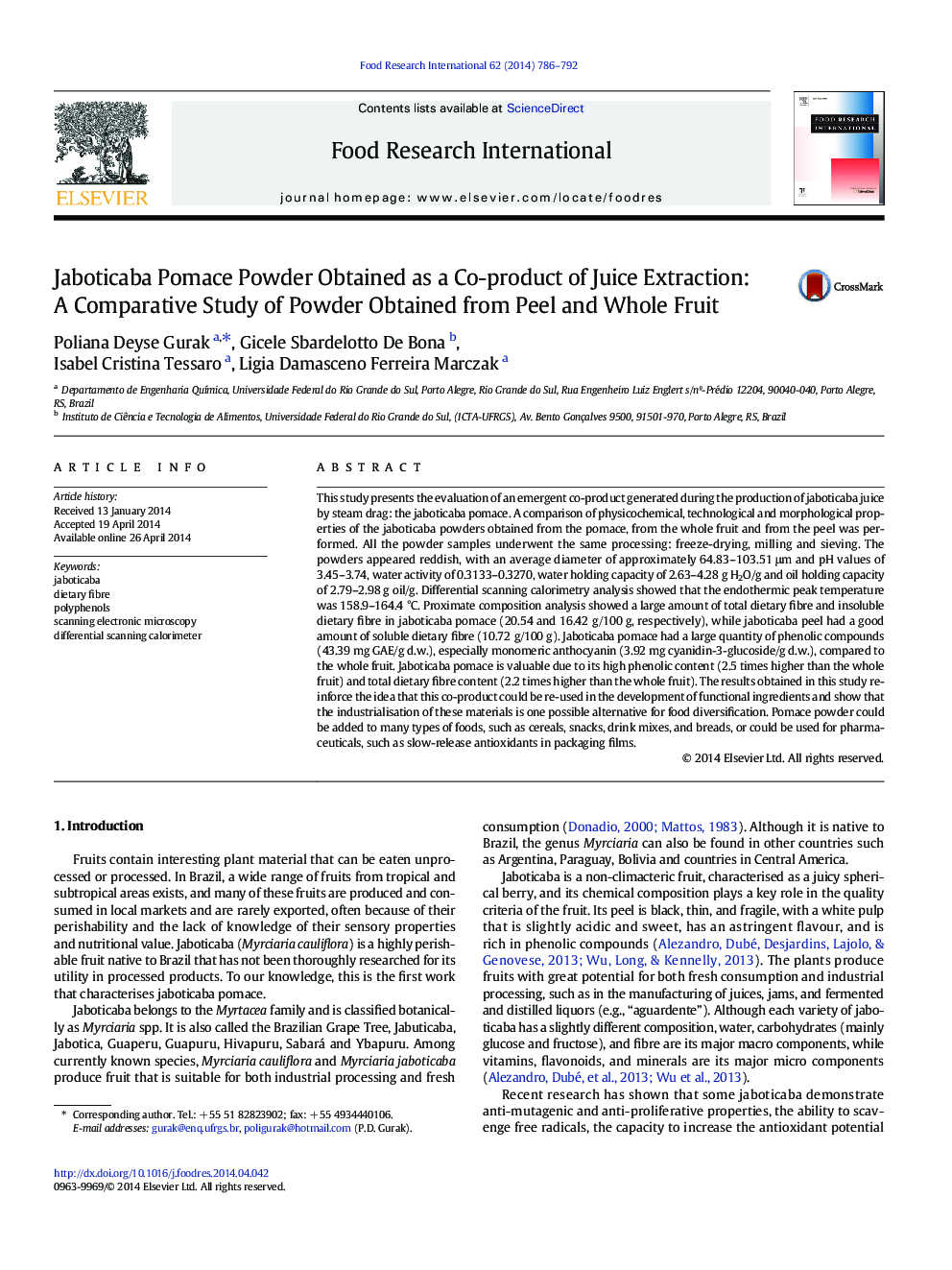| کد مقاله | کد نشریه | سال انتشار | مقاله انگلیسی | نسخه تمام متن |
|---|---|---|---|---|
| 6395942 | 1628482 | 2014 | 7 صفحه PDF | دانلود رایگان |

- Jaboticaba pomace is an emerging co-product from Brazil.
- The co-product obtained during jaboticaba juice extraction is a source dietary fibre.
- The co-product obtained during jaboticaba juice extraction is a source polyphenols.
- Scanning electron micrographs of samples showed no differences.
- The thermal and thermodynamic properties of samples were studied.
This study presents the evaluation of an emergent co-product generated during the production of jaboticaba juice by steam drag: the jaboticaba pomace. A comparison of physicochemical, technological and morphological properties of the jaboticaba powders obtained from the pomace, from the whole fruit and from the peel was performed. All the powder samples underwent the same processing: freeze-drying, milling and sieving. The powders appeared reddish, with an average diameter of approximately 64.83-103.51 μm and pH values of 3.45-3.74, water activity of 0.3133-0.3270, water holding capacity of 2.63-4.28 g H2O/g and oil holding capacity of 2.79-2.98 g oil/g. Differential scanning calorimetry analysis showed that the endothermic peak temperature was 158.9-164.4 °C. Proximate composition analysis showed a large amount of total dietary fibre and insoluble dietary fibre in jaboticaba pomace (20.54 and 16.42 g/100 g, respectively), while jaboticaba peel had a good amount of soluble dietary fibre (10.72 g/100 g). Jaboticaba pomace had a large quantity of phenolic compounds (43.39 mg GAE/g d.w.), especially monomeric anthocyanin (3.92 mg cyanidin-3-glucoside/g d.w.), compared to the whole fruit. Jaboticaba pomace is valuable due to its high phenolic content (2.5 times higher than the whole fruit) and total dietary fibre content (2.2 times higher than the whole fruit). The results obtained in this study reinforce the idea that this co-product could be re-used in the development of functional ingredients and show that the industrialisation of these materials is one possible alternative for food diversification. Pomace powder could be added to many types of foods, such as cereals, snacks, drink mixes, and breads, or could be used for pharmaceuticals, such as slow-release antioxidants in packaging films.
Journal: Food Research International - Volume 62, August 2014, Pages 786-792